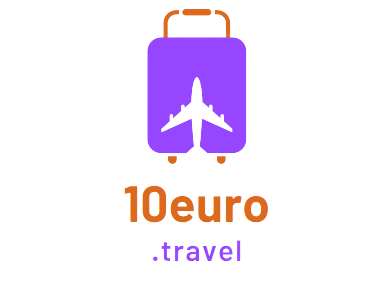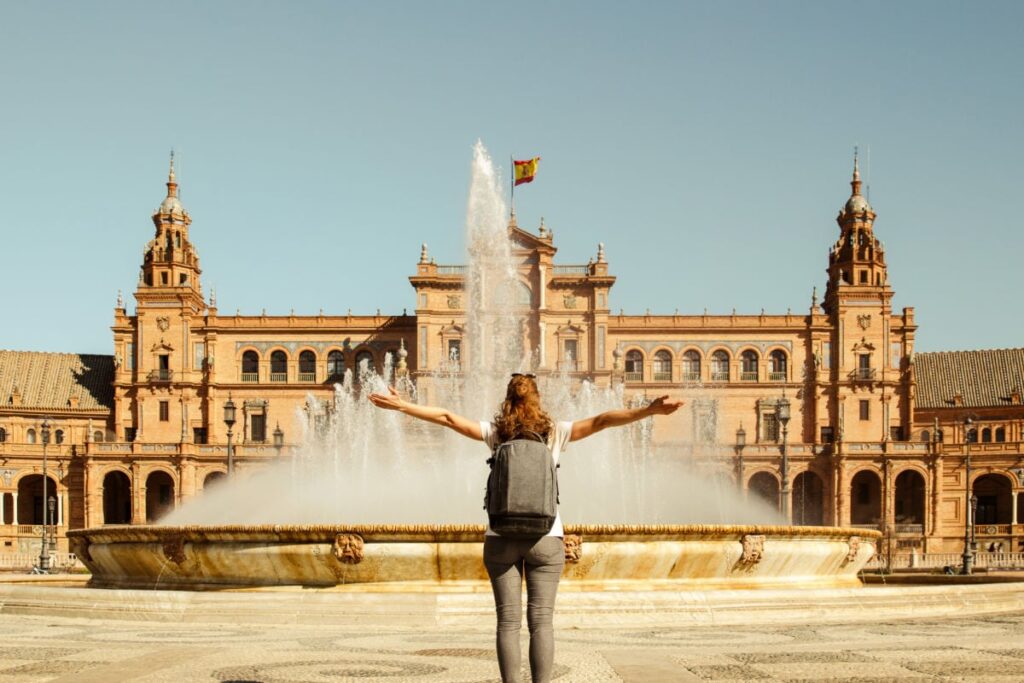No products in the cart.
Travel Guide
Why This Historic Spanish City Is The Next Big Digital Nomad Destination
Last Updated
Spain is one of Europe’s most popular tourism destinations, and with good reason. The country boasts vibrant cities, captivating coastlines, and warm, sunny weather for most of the year.
With the launch of Spain’s digital nomad visa this year, travelers will be keen to discover which places in Spain are the best to live, work, and explore.
While the bright lights of Barcelona may be appealing, there’s another historically fascinating city making a strong claim to become a new favorite among digital nomads.

Seville is the fourth largest city in Spain and the capital of the Andalusia region. It’s also somewhat of a cultural melting pot, blending history and traditions from Spain and North Africa.
This vibrant and modern destination was recently named as one of the European Capitals of Smart Tourism for 2023 thanks to several technology-based innovations launched by city planners.
These innovations paired with Seville’s charming architecture and lively culture make it an ideal place to live and work as a digital nomad.
It’s also one of the sunniest cities in Europe, with more than 2,800 hours of sunlight each year.

A Technological Trailblazer
Seville is using technology to help tourists have a more enjoyable and stress-free visit.
For example, the city has introduced more public transport options that use renewable energy in a bid to reduce traffic and improve air quality.
Seville also has a Tourism Intelligence System project that analyses crowds and people movements to prevent the most popular areas becoming too crowded. This has helped protect and preserve attractions.
City planners also recently introduced the Sevilla Accessible App, which allows visitors with mobility issues to plan routes that allow them to explore with freedom and using transport that suits their needs.
Top 5 Travel Insurance Plans For 2023 Starting At $10 Per Week

What Are The Best Things To See In Seville?
One of the must-see attractions is the Alcazar Real de Sevilla. This palace complex is still used by the Spanish royal family and has an architecture style known as Mudejar, showcasing the region’s North African influences.

The Plaza de España is another highlight. This famous square is actually circular in shape and is covered with 48 colorful mosaics that represented the 48 provinces the country had at the time of the square’s construction in 1928.

For modern art lovers, a trip to Las Setas de Sevilla, or Metropol Parasol can’t be missed. One of the world’s largest wooden structures, this timber canopy also houses an archeological museum in the basement and walkways with impressive views on its upper.
Another highlight is the Torre del Oro, a striking tower built in Moorish style that was part of the walls that once enclosed the city in ancient times.

Green Space To Take A Break From Work
Seville is known as one of the hottest cities in Europe, so it’s nice to know it’s also home to plenty of parks and green space to enjoy a stroll or relaxing afternoon under the shade of a tree.
Parque de Maria Luisa lies just south of the Plaza de España and will enchant you with its pretty buildings and pavilions as well as tranquil fountains and tree-lined avenues.
For a quieter experience, the Alamillo Park in the north of Seville runs alongside the river Guadalquivir and features smooth paved walking routes, an ancient aqueduct, and a nature observatory.
Across the river from the Plaza de España lies Parque de los Principes, a smaller park that lacks nothing in prettiness and features a small lake you can cross on a bridge.

About The Spanish Digital Nomad Visa
Spain’s digital nomad visa was introduced this year as part of the country’s StartUp Act. Here are some key things you should know about it:
- The visa is open to anyone from a country outside of the European Economic Area.
- You must prove your monthly income is double the Spanish minimum wage.
- You must have been working remotely for at least one year.
- You must not have been a resident in Spain in the last five years.
- Spouses and partners can come too – but that involves an increase in provable income.
- You can also work for a company in Spain, but that income must not exceed 20% of your total income.
- The visa is valid for one year but can be extended into a temporary residency permit valid for three years once you’ve arrived in Spain.
Traveler Alert: Don’t Forget Travel Insurance For Your Next Trip!
↓ Join Our Community ↓
The Travel Off Path Community FB group has all the latest reopening news, conversations, and Q&A’s happening daily!

SUBSCRIBE TO OUR LATEST POSTS
Enter your email address to subscribe to Travel Off Path’s latest breaking travel news, straight to your inbox.
This article originally appeared on TravelOffPath.com
Source link

